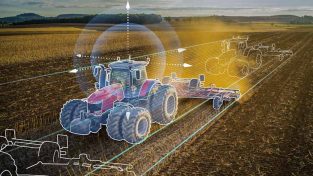Geospatial tools like the ones provided by Hexagon are essential for controlling deforestation in the Amazon and other essential forest ecosystems.
21 March is International Day of Forests, first proclaimed in 2012 by the United Nations with the goal of celebrating and raising awareness of all types of forests around the globe. Along with the Food and Agriculture Organization of the United Nations (FAO), world governments, the Collaborative Partnership on Forests and other relevant organizations in the field, International Day of Forests is a time to both appreciate the beauty of nature and to recognize the harm being done to forest ecosystems worldwide, along with looking forward to solutions that can be utilised to save these vital organs of our planet from destruction.
Forest ecosystems are home to 80% of the world’s biodiversity, from the magnificent flora and fauna seen in nature photography to the less visible — but equally important — biomass of insects and microorganisms that support crucial aspects of the ecosystem. Forests are especially important for maintaining biodiversity on Earth, as the varied environments created within them support many different types of life in a comparatively small area, from fungi to big cats, massive reptiles and everything in between. Of course, the importance of forests doesn’t end with the creatures that live within them, as their role in cleaning the atmosphere of excess carbon is absolutely crucial in the ongoing fight against global climate change.
Unfortunately, our world’s forests are not on track to a long and healthy life. Deforestation is a serious problem plaguing much of the planet — 46% of the planet’s total trees have been cut down — and nowhere is this more apparent than in the famous Amazon basin. 17% of the Amazon rainforest has already been destroyed in the past 50 years alone, largely by illegal deforestation and fire. A recent study published by INPE/MCTI researchers shows that forest deforestation reduces the ability of the Amazon to absorb carbon from the atmosphere and alters the local climate, leaving the remaining forest even more vulnerable to future damage.
To ensure a stable future for this key resource, governments are relying more than ever on technological advances to monitor conditions and act as quickly as possible. One technology that is lending a hand in the fight against deforestation is smart monitoring.
The Amazon is big: 5 million square kilometres big. This makes the challenge of keeping a watchful eye on the land even more difficult; conditions as varied as territorial extension, cloud cover hindering remote surveillance, data outpacing computing power and even physical distance, which delays the time between events and mobilisation of resources, all contribute to a lack of efficiency in stopping environmental crimes and natural occurrences that harm the rainforest.
The use of geospatial technologies has already been used to support surveillance of environmental conditions in the Amazon, and greater access to data collection assets such as commercial and free satellites allows every point in the region to be monitored daily. But as we all know, data isn’t truly useful if it can’t be fully utilised.
New automation systems driven by artificial intelligence are being used to process the entire spectrum of information gathered by observation equipment, changing the landscape of forest protection by allowing the creation of automated alerts and fast dispatch of crews to address needs when they arise. The leap in technological resources also creates greater efficiency and agility in decision-making and reduces human resources and infrastructure costs for field inspection work, enabling greater protection of forestland with less wasted time, money and environmental resources.
Hexagon is dedicated to shaping the future of forest protection by providing GIS and remote sensing tools that allow students and researchers to make a difference in the fight against deforestation. If you’re interested in a deep dive into the data and how Hexagon’s geospatial solutions are joining the effort to preserve one of our planet’s oldest ecosystems by empowering an autonomous future, you can view our webinar on artificial intelligence and machine learning for forestry management and monitoring here.
Our forests are not a resource we can afford to lose. Thankfully, with technology like smart monitoring, we can choose the future we want to live in with our actions today.

















